Mahāmāyā Tantra – Chapter 02
Mahāmāyā Tantra
Chapter Two (Dvitīyaḥ Paṭalaḥ)
Sanskrit Text with Transliteration and Translation
Mahāmāyā’s Mantras and Worship
अथ द्वितीयः पटलः
(Chapter Two: The Worship and Mantras of Mahāmāyā)
Devi Inquires About the Worship of Mahāmāyā
देव्युवाच
कथयेशान सर्वश यतोऽहं तव मल्लभा।
हूयुः स्निग्धाय शिष्याय गुरवो गुह्यमप्युत ॥१॥
बारावनन्तु मायायाः कथय स्वानुकम्पया।
येन लोका: स्तरिष्यन्ति महामोहात् सुरेश्वरः ॥२॥
Translation:
Devi spoke:
“O Īśāna (Lord Śiva)! O Lord of the Devas (Sureśvara)! You are omniscient.
If I am truly dear to You, then, as a guru bestows even the most secret knowledge to a worthy disciple,
Please reveal to me the sacred method of Mahāmāyā’s worship,
By which humans may cross over the great ocean of delusion (Mahāmohā).” (1-2)
Śiva Reveals the Nature of Mahāmāyā
ईश्वर उवाच
धूणु देवि प्रवक्ष्यामि तस्या बाराधनं महत्।
या चिच्छक्तिः सैव माया सा दुर्गा परिचक्ष्यते ॥३॥
या दुर्गा सा महाकाली तारिणी च महेश्वरी।
अन्नपूर्णा च सा माया गृहिणां कल्पनाशिनी ॥४॥
Translation:
Īśvara spoke:
“O Devi, listen attentively! I shall now explain the great worship method of Mahāmāyā.
She is the Citi-Śakti (Consciousness-Power),
She is Māyā, and She is also known as Durgā. (3)
The same Durgā is also Mahākālī, Tārīṇī, and Mahēśvarī.
She is Annapūrṇā, the Goddess who nourishes all beings,
And She is the Kalpanāśinī (destroyer of illusions) for householders. (4)
भोगमोक्षप्रदा देवी तस्मात् पूर्णेति चक्ष्यते।
माया गुणमयी देवी निर्गुणानां चिदात्मिका ॥५॥
यदि सा बहुभिः पुण्यैः प्रसीदति जनान् प्रति।
तदैव कृतकृत्यास्ते संसाराच्च बहिष्कृताः ॥६॥
Translation:
She is the bestower of both worldly enjoyment (Bhoga) and liberation (Mokṣa),
And for this reason, She is known as Pūrṇā (the Complete One).
Mahāmāyā is Gūṇamayī (the embodiment of the three Guṇas—Sattva, Rajas, and Tamas),
Yet She is also Nirguṇā (beyond all attributes),
She is Cidrūpiṇī (the embodiment of pure consciousness). (5)
If She bestows Her grace upon an individual,
That person attains complete fulfillment and is liberated from the cycle of worldly bondage. (6)
Mahāmāyā’s Influence in the Divine Play
दुरन्ताचारा सा माया मुनितामणि मोहिनी।
श्रीकृष्णं मोहयामास राधा गोकुलसंस्थिता ॥७॥
स चैव देवकीपुत्रस्तामाराध्य निरन्तरम्।
प्रकृत्याचारनिष्ठो ज्ञानानावेशयत् प्रभुः ॥८॥
Translation:
Mahāmāyā is Durantācārā (Unfathomable in Her actions),
She even bewilders the greatest sages.
It was She, in the form of Rādhā, who enchanted Śrī Kṛṣṇa while residing in Gokula. (7)
Even the Divine Son of Devakī (Śrī Kṛṣṇa) continuously worshipped Mahāmāyā,
Remaining immersed in Her cosmic play,
And ultimately, He attained the highest state of divine wisdom. (8)
The Supreme Mahāmāyā Mantra
बत्त्या मन्त्रम् प्रवक्ष्यामि भृणुष्व कमलानने।
शिवो वह्निसमायुक्तो वामनेन्दुभूषितः ॥९॥
एषा तु परमा विद्या देवैरपि सुदुर्लभा।
भविर्ब्रह्मास्य मन्त्रस्य त्वनुष्टुप्छन्द उदाहृतम् ॥१०॥
Translation:
“O Kamalanane (Lotus-Faced Devi)!
I shall now reveal to You the supreme mantra of Mahāmāyā—listen attentively!
This mantra is imbued with the essence of Śiva, Agni (Fire), Vāmana (Dwarf Incarnation of Viṣṇu), and the Moon (Indu). (9)
This is the Supreme Vidyā (Secret Knowledge),
Which is extremely difficult even for the Devas to obtain.
This mantra is Brahmāsya Mantra (belonging to Brahman itself),
And it is composed in Anuṣṭubh Chandaḥ (a specific metrical form of Vedic poetry). (10)
Significance of the Mahāmāyā Mantra
देवता मुनिभिः प्रोक्ता माया श्रीमुवनेश्वरी।
चतुर्वर्गेषु मेधावी विनियोगः प्रकीर्तितः ॥११॥
Translation:
The great sages have declared that the Devata (Deity) of this mantra is Mahāmāyā Śrī Bhuvaneśvarī Herself.
This mantra is effective in the attainment of Dharma (righteousness), Artha (wealth), Kāma (desires), and Mokṣa (liberation),
And thus, it is regarded as the supreme means for achieving all four human goals (Chaturvarga). (11)
Commentary:
In this chapter, Mahāmāyā is revealed as the Supreme Power (Citi-Śakti), the source of all manifestations, and the ultimate liberator. She is both Gūṇamayī (possessing attributes) and Nirguṇā (beyond all attributes)—showing Her paradoxical nature.
The dialogue between Devi and Śiva reveals the mystical origins of the Mahāmāyā mantra, which is linked to the cosmic forces of Śiva, Fire, the Moon, and Viṣṇu’s Vāmana form. The mantra is not just for worldly success but is also a pathway to ultimate liberation.
A key insight is the role of Mahāmāyā in the divine play of Śrī Kṛṣṇa and Rādhā—suggesting that even the greatest incarnations are bound by Her cosmic illusion. Rādhā, as Mahāmāyā, enchanted Kṛṣṇa, and even Kṛṣṇa worshipped Her continuously, showing that even divine beings are subject to Her power.
This chapter thus establishes Mahāmāyā as the supreme controller of all creation, preservation, and dissolution, making Her worship an essential means of attaining both worldly and spiritual success.
Dhāraṇā and Worship of Mahāmāyā
बंगानि मायया न्यस्य ध्यायेद्देवीं चतुर्भुजाम्।
रक्तवर्णां पद्मसंस्थां नानालङ्कारभूषिताम्॥१२॥
paṅgāni māyayā nyasya dhyāyed devīṁ caturbhujām।
raktavarṇāṁ padmasaṁsthāṁ nānālaṅkāra-bhūṣitām॥12॥
Translation:
One should perform Aṅganyāsa using the Māyā Bīja Mantra,
Then, meditate upon the four-armed Devi,
Who is red in complexion, seated upon a lotus,
And adorned with various divine ornaments. (12)
पट्टवस्त्रपरिधानां चतुरञ्जीररञ्जनीम्।
हारकेयूरवलय-प्रवाल-परिशोभिताम्॥१३॥
paṭṭa-vastra-paridhānāṁ caturañjīra-rañjinīm।
hāra-keyūra-valaya-pravāla-pariśobhitām॥13॥
Translation:
She wears silken garments,
And is gracefully adorned with anklets.
She radiates brilliance through necklaces, armlets, bangles, and coral embellishments. (13)
बालेन्दुपुण्डरकां बालां नयनत्रितयान्विताम्।
एवं ध्यात्वा महामायामुपचारैः समर्चयेत्॥१४॥
bālendu-puṇḍarākāṁ bālāṁ nayanatritayānvitām।
evaṁ dhyātvā mahāmāyām upacāraiḥ samarcayet॥14॥
Translation:
She has a crescent moon on her forehead,
Is of youthful beauty,
And possesses three luminous eyes.
Thus meditating upon Mahāmāyā, one should perform ritual worship (Upacāra Pūjā). (14)
Initiation into the Supreme Mantra
गुरुं प्रणम्य विधिवद्गृह्णीयात् परमं मनुम्।
ततो देवीं प्रसाद्यैवं कृतकृत्यो भवेत् सुधीः॥१५॥
guruṁ praṇamya vidhivad gṛhṇīyāt paramaṁ manum।
tato devīṁ prasādyaivaṁ kṛtakṛtyo bhavet sudhīḥ॥15॥
Translation:
One should reverently bow to the Guru,
And receive initiation into the Supreme Mantra in the prescribed manner.
By worshipping the Devi with devotion,
The wise one attains complete fulfillment. (15)
The Supreme Durgā Mantra
अथ दुर्गामनुः
वक्ष्ये दुर्गामनुं वक्ष्ये शृणुष्व कमलानने।
यस्या प्रसादमासाद्य भयेतु गङ्गाधरः स्वयम्॥१६॥
atha durgāmanuḥ
vakṣye durgāmanuṁ vakṣye śṛṇuṣva kamalānane।
yasyā prasādam āsādya bhavetu gaṅgādharaḥ svayam॥16॥
Translation:
“O Kamalānane (Lotus-Faced Goddess)!
Now, I shall reveal the supreme Durgā Mantra—listen attentively.
Even Gaṅgādhara (Śiva himself),
By receiving Her grace, becomes free from all fear. (16)
The Essence of the Mahāmāyā Bīja Mantra
शान्तं बीजं समुद्धृत्य वामकर्णविभूषितम्।
इन्दुबिन्दुसमायुक्तं बीजं परमदुर्लभम्॥१७॥
śāntaṁ bījaṁ samuddhṛtya vāmakarṇa-vibhūṣitam।
indu-bindu-samāyuktaṁ bījaṁ paramadurlabham॥17॥
Translation:
The supreme seed mantra of Mahāmāyā,
Is peaceful,
Adorned on the left ear (symbolizing secrecy),
And united with the lunar dot (Bindu),
It is exceedingly rare to obtain. (17)
चतुर्वर्गप्रदं साक्षान्महापातकनाशनम्।
एकाक्षरी समा नास्ति विद्या त्रिभुवने प्रिये॥१८॥
caturvarga-pradaṁ sākṣān mahāpātaka-nāśanam।
ekākṣarī samā nāsti vidyā tribhuvane priye॥18॥
Translation:
This mantra bestows the fourfold goals (Dharma, Artha, Kāma, and Mokṣa),
And destroys even the gravest sins.
There is no greater one-syllable mantra than this in all three worlds,
O beloved of the three worlds! (18)
The Power of the Mantra
विना गन्धैर्विना पुष्पैर्विना होमपुरःसरैः।
विना न्यासै महादेवि जपमात्रेण सिद्धिदा॥१९॥
vinā gandhair vinā puṣpair vinā homa-puraḥsaraiḥ।
vinā nyāsai mahādevi japa-mātreṇa siddhidā॥19॥
Translation:
This Mahāmantra does not require incense,
Nor flowers, nor oblations into the sacred fire.
Even without Nyāsa,
O Mahādevī,
It grants perfection through Japa alone. (19)
The Divine Attributes of Mahāmāyā
चतुर्वर्गप्रदा दुर्गा सर्वसत्त्वेषु संस्थिता।
विप्राश्च महाविद्या तच्च्छृणुष्व गणेश्वरि॥२१॥
caturvarga-pradā durgā sarva-sattveṣu saṁsthitā।
viprāś ca mahāvidyā tac chrṛṇuṣva gaṇeśvari॥21॥
Translation:
Durgā is the bestower of the four human goals (Caturvarga: Dharma, Artha, Kāma, and Mokṣa),
And She resides within all sentient beings.
O Gaṇeśvarī,
Listen to the essence of this Supreme Mahāvidyā. (21)
The Nyāsa of the Mantra
पूर्वोक्त एक-एक मन्त्रं उच्चारयेद् यथाक्रमम्।
अङ्गुष्ठाभ्यां नमः, तर्जनीभ्यां स्वाहा, मध्यमाभ्यां वषट्।
अनामिकाभ्यां हुम्, कनिष्ठिकाभ्यां वौषट्, करतल-पृष्ठाभ्यां फट्॥
Translation:
One should perform Nyāsa (installation of the mantra in the body),
By chanting the mantra syllable by syllable,
And then touching the corresponding fingers and palms as follows:
- Aṅguṣṭhābhyāṁ Namaḥ (Thumbs)
- Tarjanībhyāṁ Svāhā (Index fingers)
- Madhyamābhyāṁ Vaṣaṭ (Middle fingers)
- Anāmikābhyāṁ Hūṁ (Ring fingers)
- Kaniṣṭhikābhyāṁ Vauṣaṭ (Little fingers)
- Karatala-Pṛṣṭhābhyāṁ Phaṭ (Palms and back of hands)
Conclusion of the Second Chapter
।। इति महामायातन्त्रे द्वितीयः पटलः ।।
Translation:
Thus ends the Second Chapter of the Mahāmāyā Tantra,
Describing the supreme mantra, its worship, and Nyāsa procedures.
Commentary:
This chapter unveils the powerful Mahāmāyā Mantra, which grants both material and spiritual success. Unlike other mantras requiring ritualistic formalities, this Bīja Mantra attains perfection merely through Japa (recitation).
The Nyāsa process is described in detail, aligning each syllable to different parts of the body, ensuring the infusion of divine energy into the practitioner.
Finally, Mahāmāyā is portrayed as the Supreme Power, transcending all forms of ritual worship, existing within all beings, and being the essence of ultimate liberation (Mokṣa).
Mahāmāyā Tantra – Chapter 02 Read More »

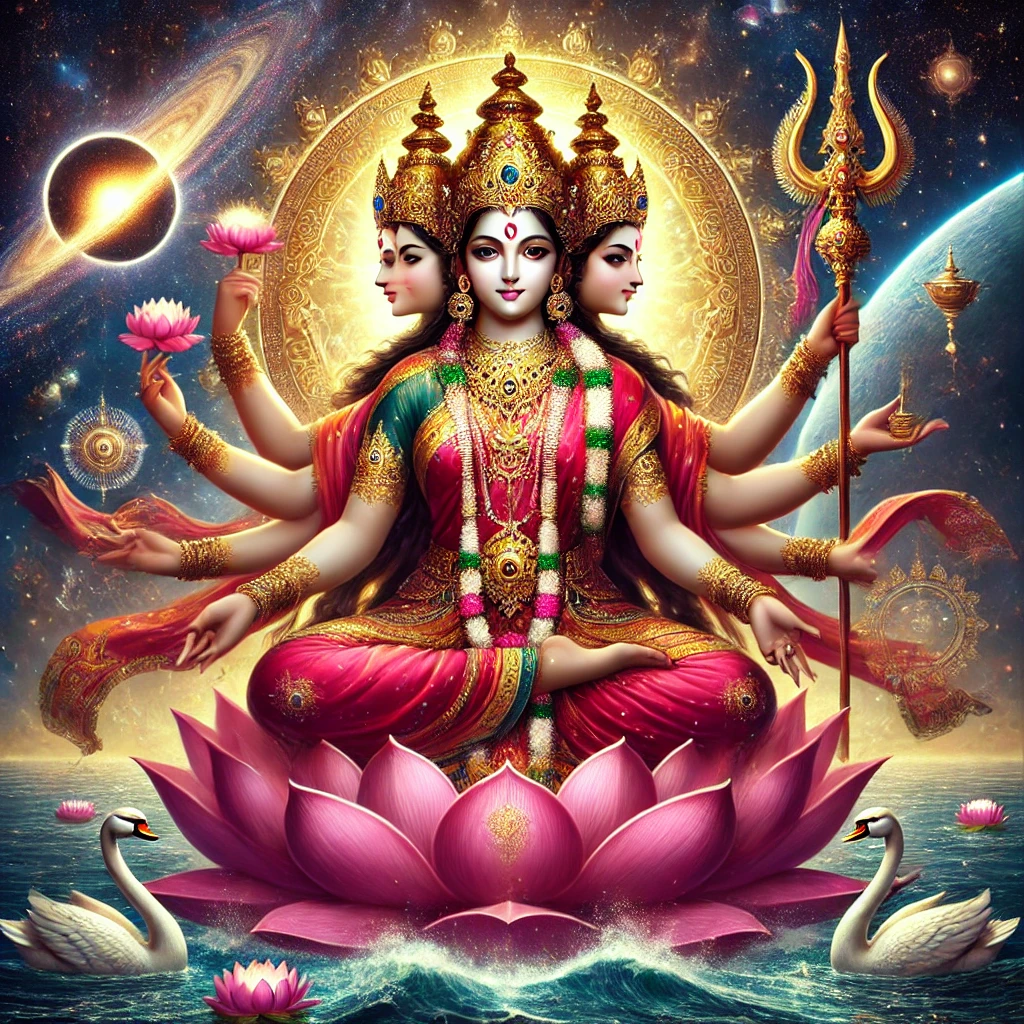
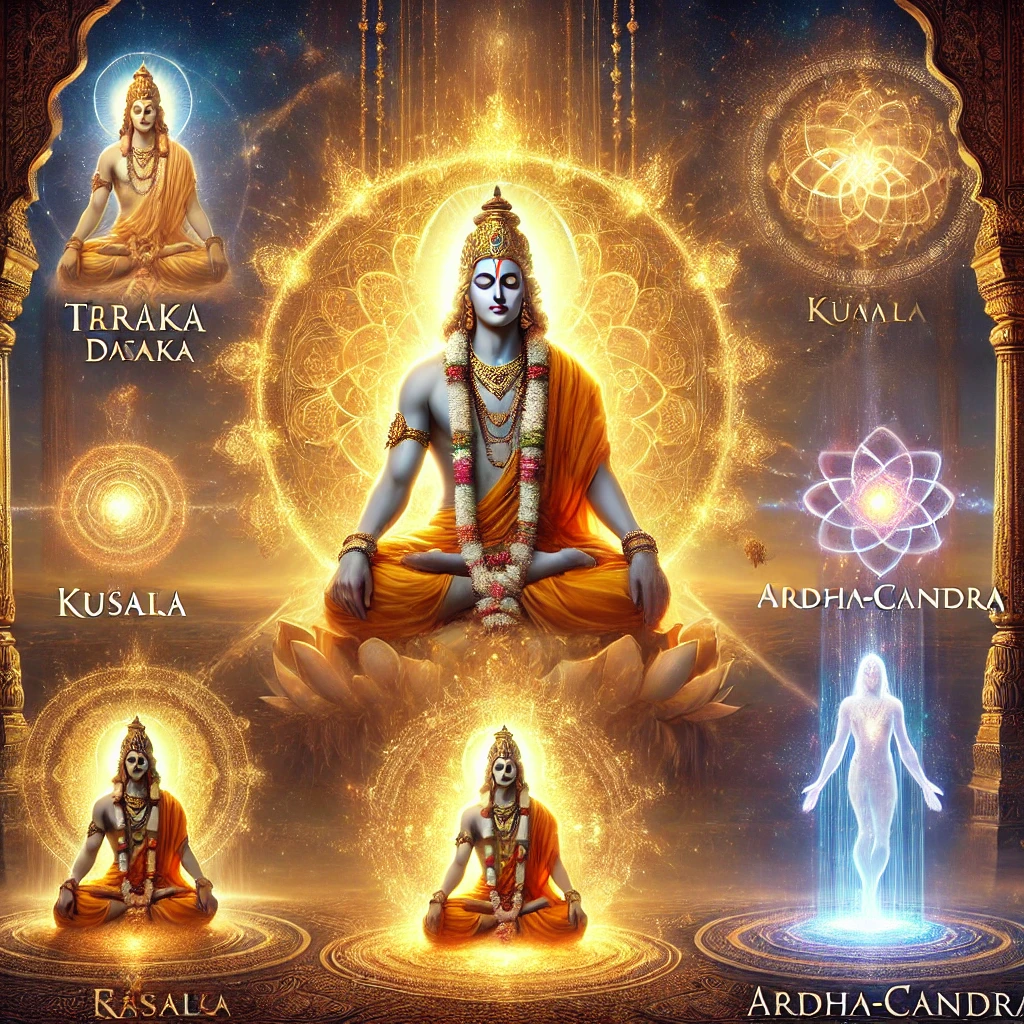
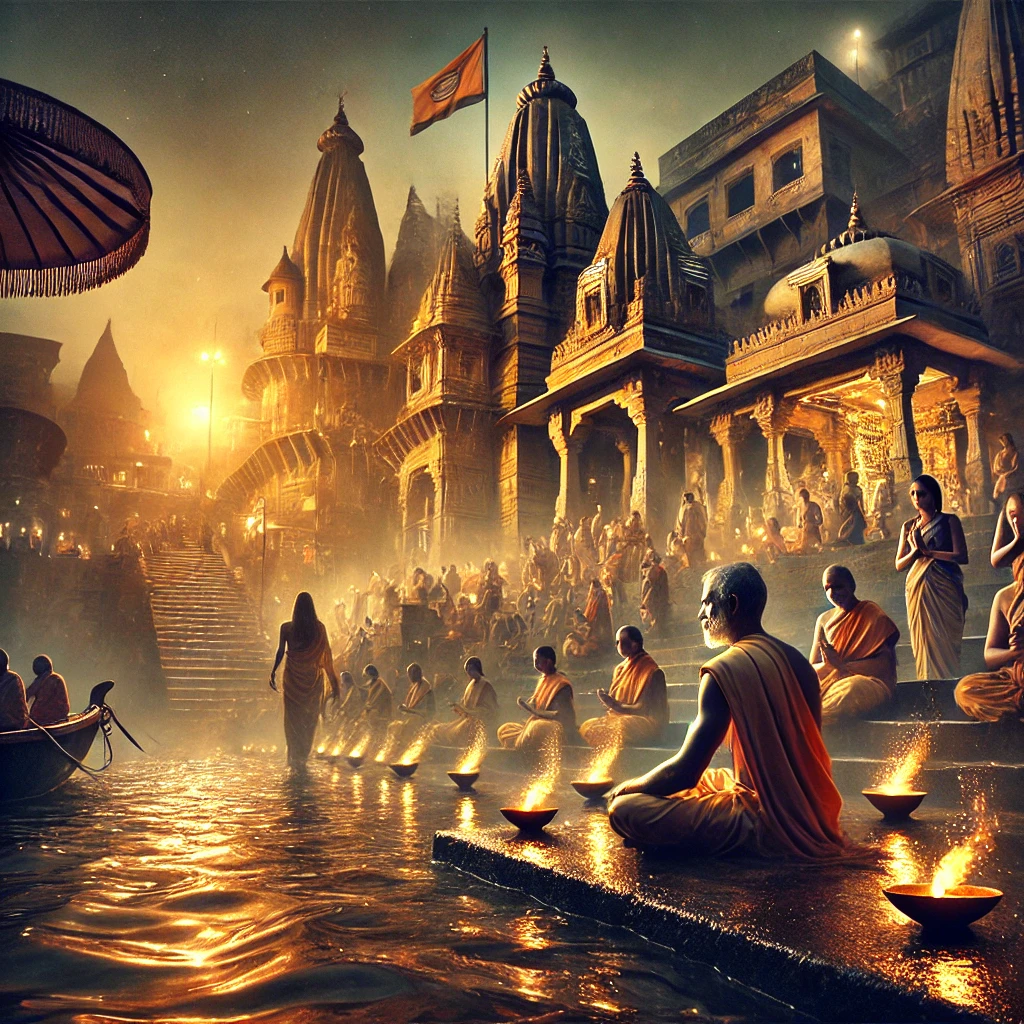
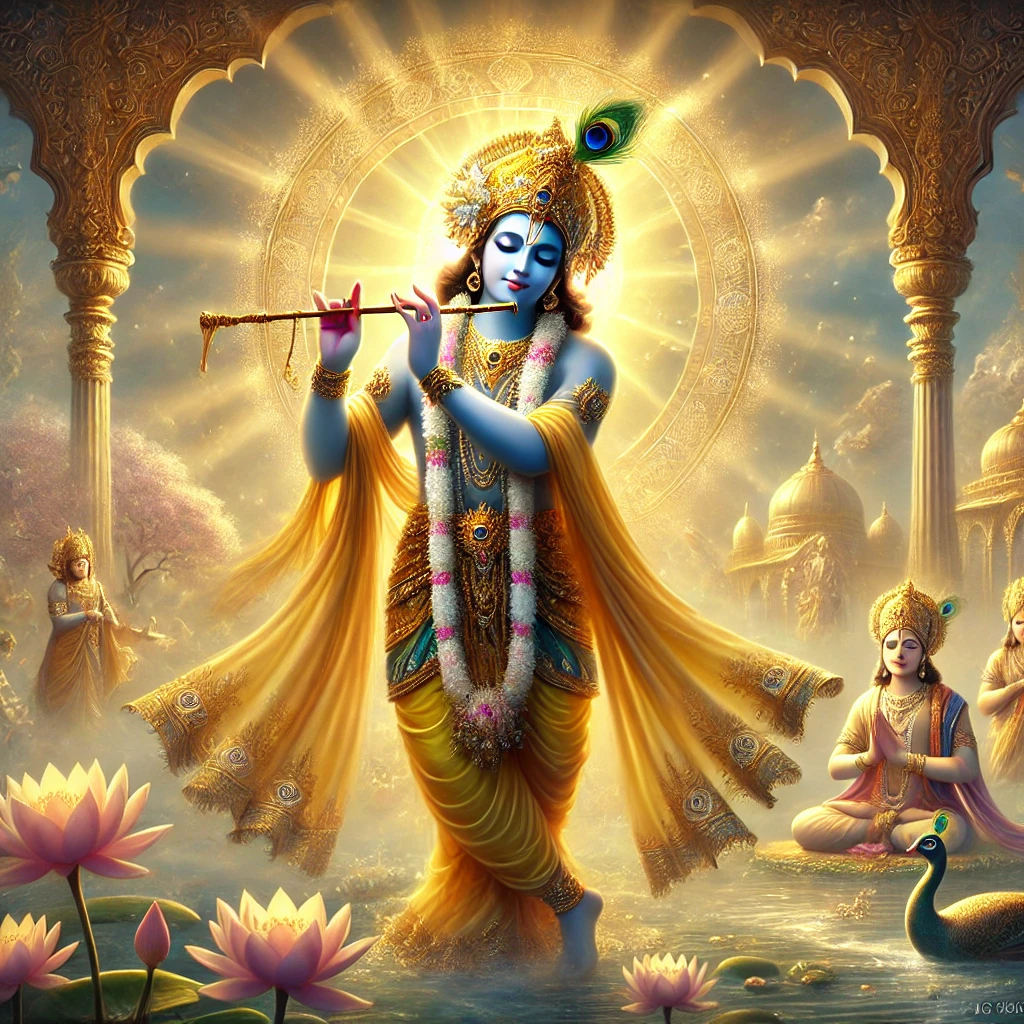
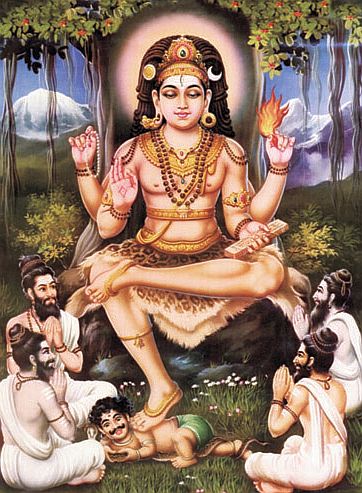
 English
English தமிழ்
தமிழ் Français
Français हिन्दी
हिन्दी മലയാളം
മലയാളം Português
Português සිංහල
සිංහල తెలుగు
తెలుగు Online | Privacy policy
Online | Privacy policy